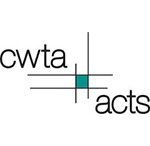
We offer several options for High Angle Rope Rescue Certifications that pertain to the industry you work in:
Contact us to request group bookings for Fall Rescue and High Angle Training.
The STAC Rescuer Course Level 1 (8hr) and 2 (8hr) is a designation for workers in the telecommunications industry who are required to be
able to rescue a co-worker. Our program meets the standard outlined by STAC. The Rescuer 1 Certification is for tower workers with less
than 6 month of work experience and the Rescuer 2 Certification is required for workers with more than 6 months of experience.
This 8 hour course is designed for tradesmen of all types (i.e. electricians, glaziers, HVAC tech, roof workers, etc) who work at height and
are required to rescue a co-worker. The prerequisite is fall protection training. Workers will learn the fundamentals of rescue planning,
equipment and techniques as well as a half day or rescue practice at height.
The MI Safety Fall Rescue course is designed to meet the Requirements set out by the CAODC for rescue equipment and training. Our course
exceeds the Industry Standard Program as we have a requirement to climb to 50' in the course and complete the activities at height. The
training is a comprehensive instructor let program where students complete drills multiple times until they are proficient. Additionally
our course ratio is capped at 8 students. Lastly, what better location to take Rig Worker training, than the Leduc 1 National Historic
Site.
The terms Fall Rescue and High Angle Rescue refer to the same courses. Both are courses for workers to rescue a fallen workers who is suspended at height. In these situations, your co‐workers are expected to be the rescuers if someone does fall. The course looks at rescue theory, simple and light weight rescue equipment, and how to effectively get a co‐worker down with only a limited amount of help. This course is available in 8 hour, 16 hour and 24 hour formats, and is customizable to your industry. We can offer this course specific to telecommunications workers, ski lift workers who are expected to climb lift towers, and also for oil and gas workers who climb vessels.
A workers suspended in a lanyard only has a few minutes, before suspension trauma can kill them. Most worksites across Canada, do not have large well trained rescue teams, or quick access to a local fire department who can provide rope rescue. As such, they must rely on each other for rescue. This course was created to address that issue. We can customize the course to you industry and complexity. That is why we offer it in the 8, 16 and 24 hour duration.
The course also covers rescue equipment needed, and will look at any equipment that your workers already use.
Depending on the students requirements, we will review the use of 11mm rope versus 12mm and 13mm kern mantle rope. We will also cover the MPD, Petzl ID, and 4:1 pulley systems.
This course is aligned with the National Association of Tower Erectors Fall Protection and Rescue Standard Training Document. In addition, it is suitable for high angle rescue for tower workers, telecommunication worker fall rescue, High Angle Rescue, and rope rescue for ski lift fall rescue. MI Safety Also offers Ski Lift Fall Rescue. The topics for all three length of training are similar, however in the extra days, students will have more practical time with the ropes, and be more competent with rescue.
We offer this course at our facility in Devon, where we have three towers that range in height from 70' to 174'. We are able to recreate virtually any scenario that is possible on your worksite. If group training is preferred, we can also facilitate this course on your site.
Students will receive a training manual, and a certificate with a 3 year expiry date for this Fall Rescue an High Angle Course. There is a final exam that consists of a theory test, and a practical component.
Rope Rescue Training for the Water Park. MI Safety completed rope rescue training for a group of tradesmen who act as the rope rescue team for this facility during any at height work. The team works in the amusement park, water park and anywhere on the facility where at height work takes place.








